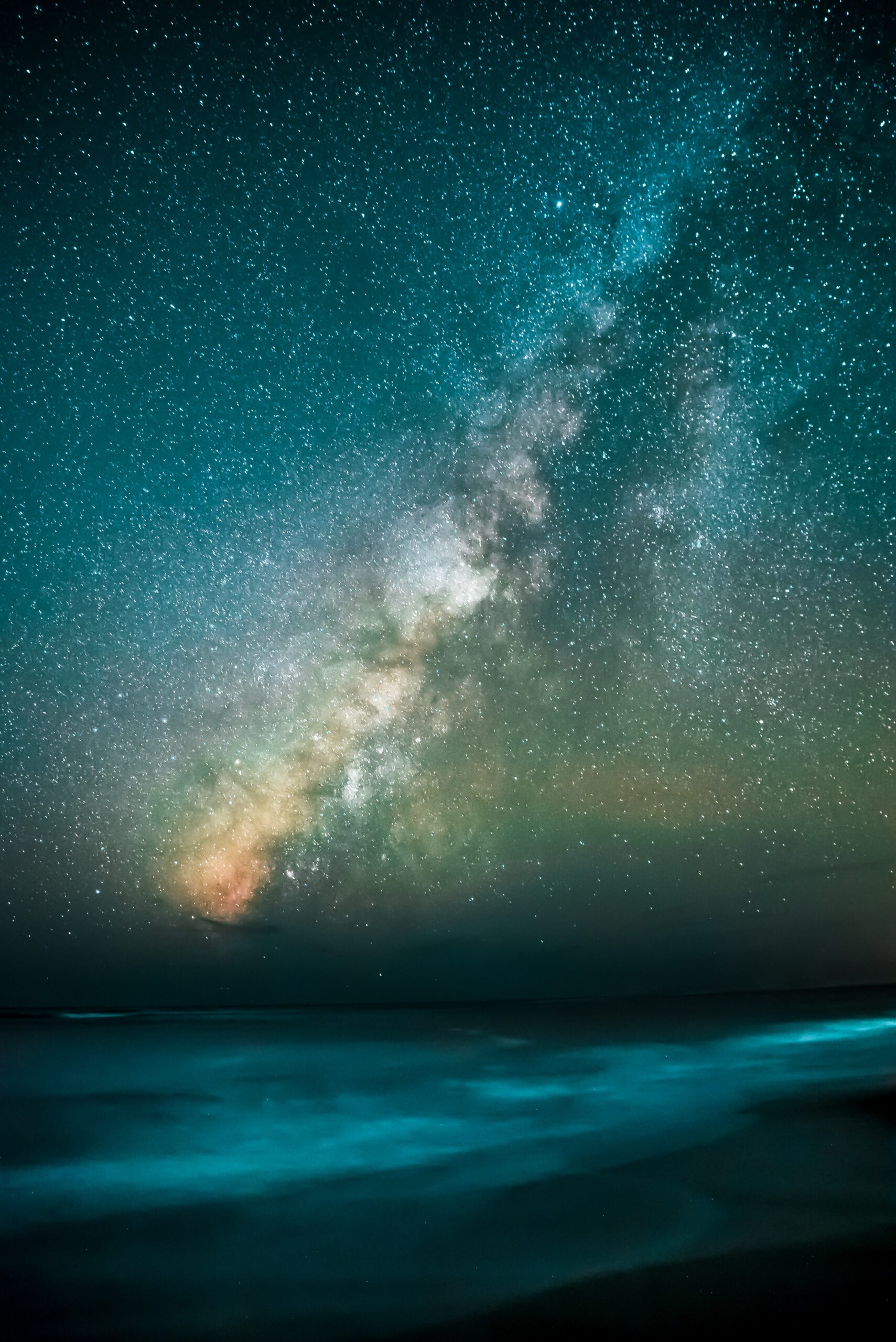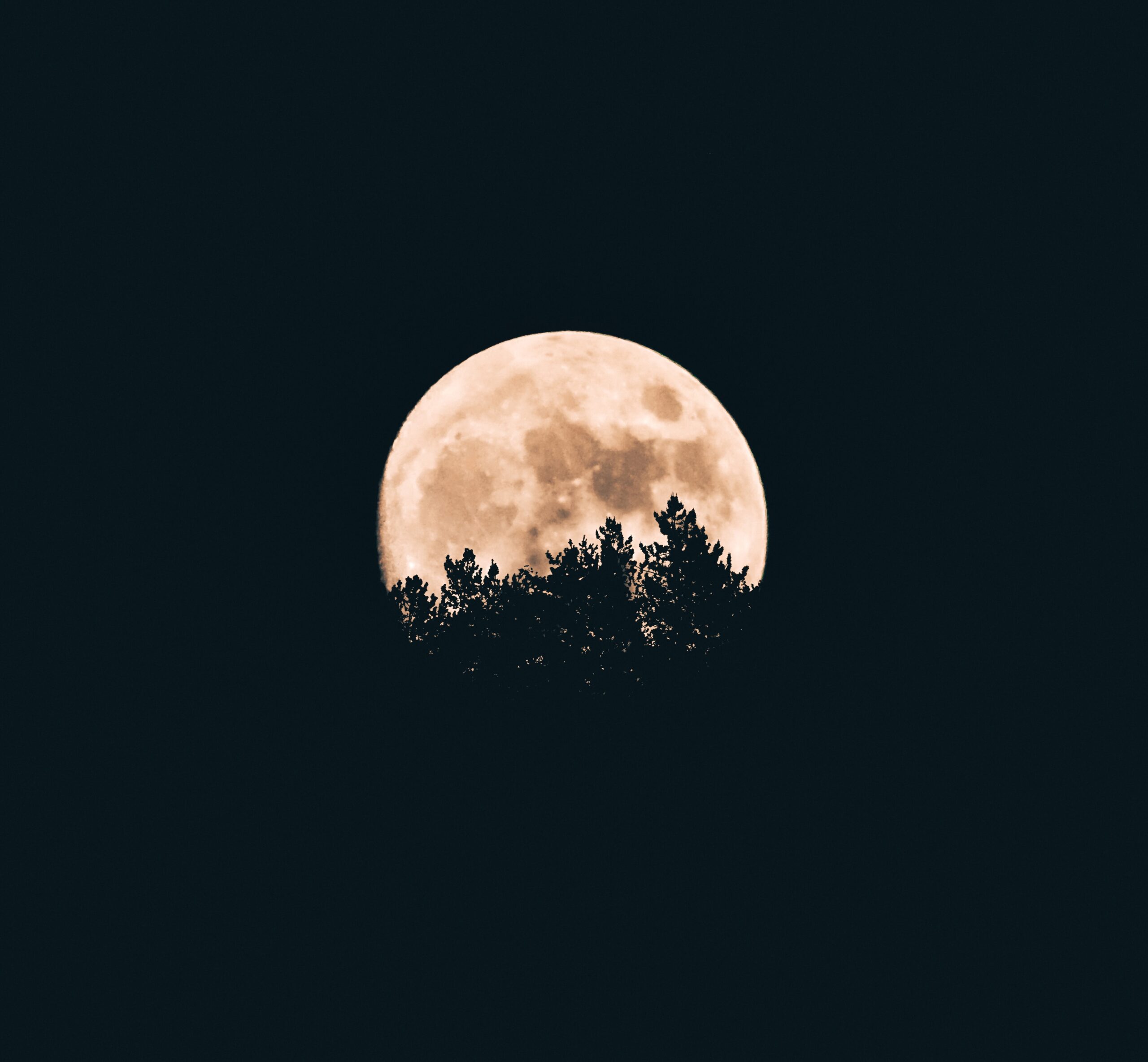Imagine yourself in the dead of night, silently stalking through the dense woods, where every rustle and snap is amplified in the eerie silence. As you raise your weapon, you come face to face with an elusive creature, its eyes glinting in the darkness. The question arises, can night vision optics be used for hunting? In this article, we will explore the fascinating world of night vision optics and delve into the possibilities it presents for those who seek the thrill of the hunt under the cloak of the night.
Understanding Night Vision Optics
Night vision optics are devices used to see in low light or complete darkness. They are commonly used in various fields, including surveillance, security, and even hunting. These devices use advanced technology to amplify existing light or convert infrared light into visible light to provide clear images in the dark.
What are Night Vision Optics
Night vision optics encompass a range of devices, including night vision goggles, binoculars, monoculars, and scopes. These devices utilize various technologies, such as image intensification and thermal imaging, to enhance visibility in low light conditions. Night vision goggles are worn like a pair of eyeglasses and provide a binocular view, while monoculars are handheld devices with a single eyepiece.

How do Night Vision Optics Work
Night vision optics work by collecting the available ambient light or infrared radiation and amplifying it to create a brighter image. They consist of specialized tubes called image intensifier tubes that amplify the available light. The intensifier tubes have a photocathode that converts incoming photons into electrons. These electrons are then accelerated and amplified multiple times, resulting in a brighter image that is visible to the human eye.
Different Types of Night Vision Optics
There are several types of night vision optics available on the market. The most common ones include Gen 1, Gen 2, and Gen 3 devices. Gen 1 night vision optics are the most affordable and widely available. They offer a decent level of visibility in low light conditions but may suffer from lower resolution and image quality.
Gen 2 night vision optics provide a significant improvement in performance compared to Gen 1. They offer better resolution, clearer images, and enhanced visibility. Gen 3 night vision optics are the most advanced and offer the highest level of performance. They provide exceptional clarity, improved low-light sensitivity, and a longer detection range.

Legal Aspects of Using Night Vision Optics for Hunting
General Legal Considerations
Before using night vision optics for hunting, it is essential to understand the legal considerations associated with their use. In many countries, hunting regulations and laws vary, and the use of night vision optics may be subject to specific restrictions. It is crucial to research and comply with local hunting regulations to ensure legal and responsible use of these devices.
Specific Laws by Country/Region
The laws regarding the use of night vision optics for hunting may differ from country to country and even from region to region within a country. It is vital to familiarize yourself with the specific laws and regulations in your area. Some countries may completely ban the use of night vision optics, while others may have specific requirements or permits necessary for usage. Consulting local wildlife authorities or hunting associations can provide updated and accurate information on the legality of using night vision optics.
Penalties for Illegal Use of Night Vision Optics
Engaging in illegal activities, such as using night vision optics unlawfully for hunting, can lead to severe penalties. These penalties may vary depending on the jurisdiction and the specific circumstances of the violation. They can include fines, confiscation of equipment, loss of hunting privileges, or even criminal charges. It is important to abide by the law and use night vision optics responsibly to avoid any legal consequences.
Advantages of Using Night Vision Optics for Hunting
Improved Accuracy
Night vision optics can significantly improve accuracy during nighttime hunts. With improved visibility in low light conditions, hunters can better identify their target, assess the surroundings, and make more precise shots. The enhanced clarity and detail provided by night vision optics allow for improved shot placement, reducing the chances of wounding an animal.
Increased Safety
Using night vision optics for hunting enhances safety by providing better visibility in the dark. It allows hunters to navigate through challenging terrains, avoiding hazards that may be hard to spot without proper visibility. Night vision optics also help identify potential threats, such as aggressive animals or other hunters, ensuring a safer hunting experience.
Extended Hunting Hours
One of the main advantages of using night vision optics for hunting is the ability to extend the hunting hours. Hunting during twilight or complete darkness can be incredibly productive, as many nocturnal animals are most active during these times. Night vision optics enable hunters to take advantage of these periods, extending their hunting opportunities and increasing their chances of success.

Disadvantages of Using Night Vision Optics for Hunting
High Costs
One of the primary disadvantages of using night vision optics for hunting is the high cost associated with these devices. Depending on the type and quality of night vision optics, they can be significantly more expensive than traditional optical equipment. This can limit access to night vision technology for some hunters, making it a less viable option for those on a tight budget.
Potential Ethical Concerns
The use of night vision optics for hunting can raise ethical concerns in certain situations. Some argue that hunting at night may give hunters an unfair advantage over animals, disturbing their natural behavior patterns. Additionally, using night vision optics may make it easier to target and shoot animals from longer distances, potentially leading to reduced sport or fair chase aspects of hunting.
Possible Negative Impact on Hunting Skills
Relying heavily on night vision optics for hunting can potentially diminish hunting skills. Traditional hunting techniques, such as tracking, reading signs, and observing animal behaviors, may take a backseat when utilizing night vision technology. Over-reliance on night vision optics could lead to a reduction in the development of essential hunting skills and the unique connection between hunters and their natural surroundings.
Using Night Vision Optics for Different Types of Hunting
Hunting Nocturnal Animals
Night vision optics are particularly useful for hunting nocturnal animals. Many animal species, such as feral hogs, coyotes, and raccoons, are most active during the nighttime hours. With night vision optics, hunters can effectively navigate and identify these animals in low light conditions, increasing their chances of success.
Hunting in Dark Environments
Hunting in dark environments, such as dense forests or heavily wooded areas, can pose significant challenges without proper visibility. Night vision optics provide the necessary visibility to maneuver through these challenging terrains, allowing hunters to identify potential targets and obstacles.
Hunting in Violent Weather Conditions
Night vision optics can also be beneficial for hunting in adverse weather conditions, such as heavy rain or fog. These weather conditions can reduce visibility to a great extent, making hunting difficult or dangerous. Night vision optics can cut through the atmospheric conditions and provide enhanced visibility, enabling hunters to continue their activities even in harsh weather.
Comparing Night Vision Optics to Thermal Imaging
How Thermal Imaging Works
Thermal imaging differs from night vision optics in its technology and functionality. Thermal imaging devices detect the heat emitted by objects and create a visual representation based on the temperature differences. These devices are effective in detecting living organisms, as they emit heat signatures. However, they do not rely on ambient light and can provide visibility even in complete darkness.
Advantages and Disadvantages of Thermal Imaging
Thermal imaging has its own set of advantages and disadvantages compared to night vision optics. One major advantage is that thermal imaging can detect heat signatures, making it highly effective in situations where visibility is extremely limited. It can also detect animals that are camouflaged or hidden by vegetation.
On the downside, thermal imaging can be more expensive than night vision optics, especially for high-quality devices. It may also have limitations in terms of target identification and fine detail perception, as it does not rely on visible light. Additionally, thermal imaging is affected by environmental factors such as weather conditions and can have reduced effectiveness in certain situations.
Choosing Between Night Vision and Thermal Imaging
Choosing between night vision and thermal imaging depends on individual preferences, specific hunting scenarios, and budget considerations. Night vision optics are generally more versatile and provide detailed visibility in low light conditions. They are suitable for various hunting scenarios and offer a more affordable option compared to thermal imaging.
Thermal imaging, on the other hand, excels in complete darkness and challenging environments where visibility is severely limited. It is an excellent choice for detecting heat signatures and overcoming obstacles such as dense foliage or adverse weather conditions. However, the higher costs and limitations in target identification may make it less ideal for general hunting purposes.
Choosing the Right Night Vision Optics for Hunting
Considerations When Selecting Night Vision Optics
When selecting night vision optics for hunting, several factors should be taken into consideration. The intended use, such as hunting style or target species, should be evaluated to determine the appropriate device. Factors to consider include the generation of night vision optics, their resolution, detection range, durability, and compatibility with other hunting equipment.
Reviews of Popular Night Vision Optic Brands
It is essential to research and read reviews of popular night vision optic brands to make an informed decision. Brands such as ATN, Pulsar, and Armasight offer a wide range of night vision optics for hunting, each with their own features and performance levels. Reading reviews from experienced hunters and professionals can provide valuable insights into the reliability, image quality, and overall satisfaction of various brands and models.
Tips for Buying Night Vision Optics
Here are a few tips to consider when buying night vision optics for hunting:
-
Set a budget: Determine how much you are willing to spend on night vision optics and stick to it.
-
Understand the technology: Familiarize yourself with the different generations of night vision optics and their capabilities to choose the most suitable one for your needs.
-
Test before buying: Whenever possible, test different models to get a firsthand feel of their image quality, ergonomics, and overall performance.
-
Consider additional features: Some night vision optics offer additional features like built-in rangefinders, video recording capabilities, or smartphone compatibility, which can enhance the hunting experience.
-
Seek expert advice: Consult with experienced hunters, professionals, or knowledgeable sales representatives who can guide you in selecting the most suitable night vision optics for your hunting requirements.
Maintenance and Care for Night Vision Optics
Preserving the Lifespan of Night Vision Optics
To ensure the longevity and optimal performance of night vision optics, proper maintenance and care are crucial. Here are some tips to preserve the lifespan of these devices:
-
Follow manufacturer’s instructions: Read and understand the manufacturer’s instructions and guidelines for maintenance and care. These instructions often provide specific recommendations for cleaning and storage.
-
Handle with care: Night vision optics are delicate and sensitive devices. Treat them with care and avoid any impact or rough handling that could damage internal components.
-
Protect from extreme conditions: Avoid exposing night vision optics to extreme temperatures, excessive humidity, or direct sunlight for extended periods. Store them in a cool and dry environment when not in use.
Routine Cleaning and Maintenance
Regular cleaning and maintenance are necessary to keep night vision optics in optimal condition. Here are some steps to follow for routine cleaning and maintenance:
-
Use the right cleaning tools: Use a soft, lint-free cloth and a cleaning solution recommended by the manufacturer to clean the lenses and outer surfaces of the optics. Avoid using abrasive materials that could scratch or damage the lenses.
-
Remove dirt and debris: Prior to cleaning, gently remove any dirt or debris from the lenses and the exterior of the optics using a blower or a soft brush.
-
Clean the lenses: Apply a small amount of the recommended cleaning solution to the cloth and gently wipe the lenses in a circular motion. Never apply cleaning solution directly to the lenses.
-
Protect the lenses: When not in use, always keep the lenses covered or protected with lens caps or covers to prevent dust, scratches, or other damage.
Dealing with Common Night Vision Optic Problems
Night vision optics may encounter common problems that can affect their performance. Here are some common issues and possible solutions:
-
Lack of image clarity: If the image appears blurry or lacks clarity, check the lenses for smudges or fingerprints and clean them following the recommended cleaning procedures.
-
Flickering or unstable image: Flickering or an unstable image could be due to a weak or dying battery. Replace or recharge the battery according to the manufacturer’s instructions.
-
Distorted or distorted image: Distorted images can be caused by misalignment or damage to internal components. In such cases, it is best to contact the manufacturer or a qualified technician for repairs or adjustments.
Training for Using Night Vision Optics in Hunting
Training Resources
Acquiring the necessary skills to effectively and safely use night vision optics in hunting requires proper training. Here are some training resources to consider:
-
Hunter education courses: Many hunting organizations and wildlife agencies provide hunter education courses that cover various aspects of hunting, including the use of night vision optics. These courses offer fundamental knowledge and safety guidelines for hunters.
-
Professional instruction: Consider attending a training program or workshop conducted by experienced hunters, professionals, or instructors who specialize in night vision optics usage. They can provide hands-on training and insights into the best practices for hunting with night vision optics.
-
Online resources: There are numerous online resources, including articles, videos, and tutorials, that offer guidance on using night vision optics for hunting. These resources can provide valuable information on techniques, safety precautions, and best practices.
Developing Proficiency in Using Night Vision Optics
Becoming proficient in using night vision optics for hunting requires practice and experience. Here are some key steps to develop proficiency:
-
Familiarize yourself with the equipment: Spend time reading the user manual and understanding all the features and functions of the night vision optics. Practice using the device in different lighting conditions to get comfortable with its operation.
-
Practice in controlled environments: Start by practicing with night vision optics in controlled environments, such as your backyard or a well-known hunting area during daylight. Get accustomed to the device’s image quality, range, and overall performance.
-
Gradually transition to low light conditions: Once comfortable using night vision optics during daylight, gradually transition to low light conditions, such as at dusk or dawn. This will help you understand the nuances of using the device in changing lighting conditions.
-
Seek guidance from experienced hunters: Hunting with experienced hunters who have prior experience using night vision optics can provide valuable insights and tips. They can offer guidance on effective techniques, target identification, and overall hunting strategies.
Safety Precautions When Using Night Vision Optics
Using night vision optics for hunting requires adherence to safety precautions to ensure a safe and responsible hunting experience. Here are some essential safety precautions:
-
Knowledge of local regulations: Familiarize yourself with local hunting regulations and laws regarding the use of night vision optics, firearm safety, and general hunting practices.
-
Safety gear: Wear appropriate safety gear, including blaze orange clothing, to ensure visibility to other hunters and to prevent accidents.
-
Proper firearm handling: Adhere to proper firearm handling and safety practices at all times. Keep firearms unloaded until ready to use and never point a loaded firearm at anyone.
-
Identification of targets: Always positively identify the target before taking a shot, even when using night vision optics. Ensure that the target is legal, ethical, and within a safe and appropriate shooting range.
-
Communication and coordination: If hunting in a group, maintain clear communication and coordination to prevent accidental shootings. Establish clear shooting lanes and ensure that all hunters know the location of each other.
Future of Night Vision Optics in Hunting
Innovations in Night Vision Technology
The future of night vision optics in hunting holds promising advancements in technology. Ongoing research and development are aimed at improving image quality, increasing detection ranges, and reducing equipment costs. Innovations may include enhanced image processing, integration of advanced sensors, and the incorporation of augmented reality features.
Potential Changes in Legal Framework
As technology evolves, the legal framework surrounding the use of night vision optics for hunting may also undergo changes. Regulations and restrictions may be revised or updated to ensure responsible and ethical use of these devices. It is important for hunters to stay informed about any changes in the legal framework to ensure compliance and avoid penalties.
Impact of Future Developments on Hunting with Night Vision Optics
Future developments in night vision technology are likely to offer hunters even more capabilities and improved performance. These advancements may result in higher resolution images, longer battery life, and increased durability. The integration of artificial intelligence and advanced targeting systems may further enhance hunting accuracy and safety.
Hunting with night vision optics will continue to evolve as technology progresses, complementing traditional hunting methods and providing hunters with valuable tools to navigate through the darkness and secure successful hunts.
In conclusion, night vision optics have become valuable tools for hunters, enabling them to hunt more effectively and safely in low light conditions or complete darkness. Understanding the legal aspects, advantages, and disadvantages, as well as the different types of night vision optics, is crucial for responsible and ethical use. By selecting the right equipment, maintaining it properly, and acquiring the necessary skills, hunters can maximize the benefits of using night vision optics and continue to enjoy the thrill and excitement of hunting even during the darkest hours of the night.

